
Across Canada’s British Columbia and back by train, mountains, rivers, elk and moose from the comfort of the observation car
- The writer takes a 17-hour trip across western Canada from Vancouver to Jasper, Alberta, then a two-day ride on the Skeena train back across British Columbia
- Up into the Rocky Mountains and back via the Coast Mountains, the train rides take in snowy peaks, frozen rivers, elk, moose, foxes and a totem pole
Perhaps because departures in Canada are now so few compared to during the great days of rail, boarding a train there is made to resemble setting off on some great voyage of questionable outcome.
At Vancouver’s Pacific Central terminal, of slightly down-at-heel grandeur, you check in as if boarding a plane, and your not-wanted-on-voyage luggage is whisked away as if you were beginning a westward ocean crossing, rather than an eastward journey across the planet’s second-largest country.
It will take three diesel locomotives to haul the train over the Rocky Mountains to the vast plains of central Canada, and they sit and throb while attendants bustle passengers to their seats and cabins, issuing guidelines and instructions and introducing themselves with typically Canadian brio (“I’m Louise – like the lake”).
But this is indeed a sort of cruise on wheels. Few of the passengers are simply travelling from A to B, although there are Canadian retirees who have been wintering in the milder climes of Vancouver and Victoria, now returning to houses still snowbound in Saskatchewan and Manitoba.

Rail enthusiasts compare how many times they’ve taken VIA Rail’s twice-weekly cross-country service, called the Canadian, for the four-day journey to Toronto. Other passengers mention the great climb over the Rocky Mountains and long trek across the country in terms of bucket lists.
The hair of very many is as snowy as the peaks encountered en route.
The totem pole that became a crumbling symbol of China-Canada relations
I’m taking the train for merely 17 hours, to the mountain resort of Jasper, in Alberta, to catch the less famous Skeena train back across British Columbia on a more northerly route.
One province, but two quite different rail experiences.
Accommodation on the Canadian ranges from simple reclining seats and single lie-flat berths screened by curtains to cabins in varying degrees of comfort. The best also offer a reserved place in the front of the dome car, with forward-facing upper-deck views along the top of the train.
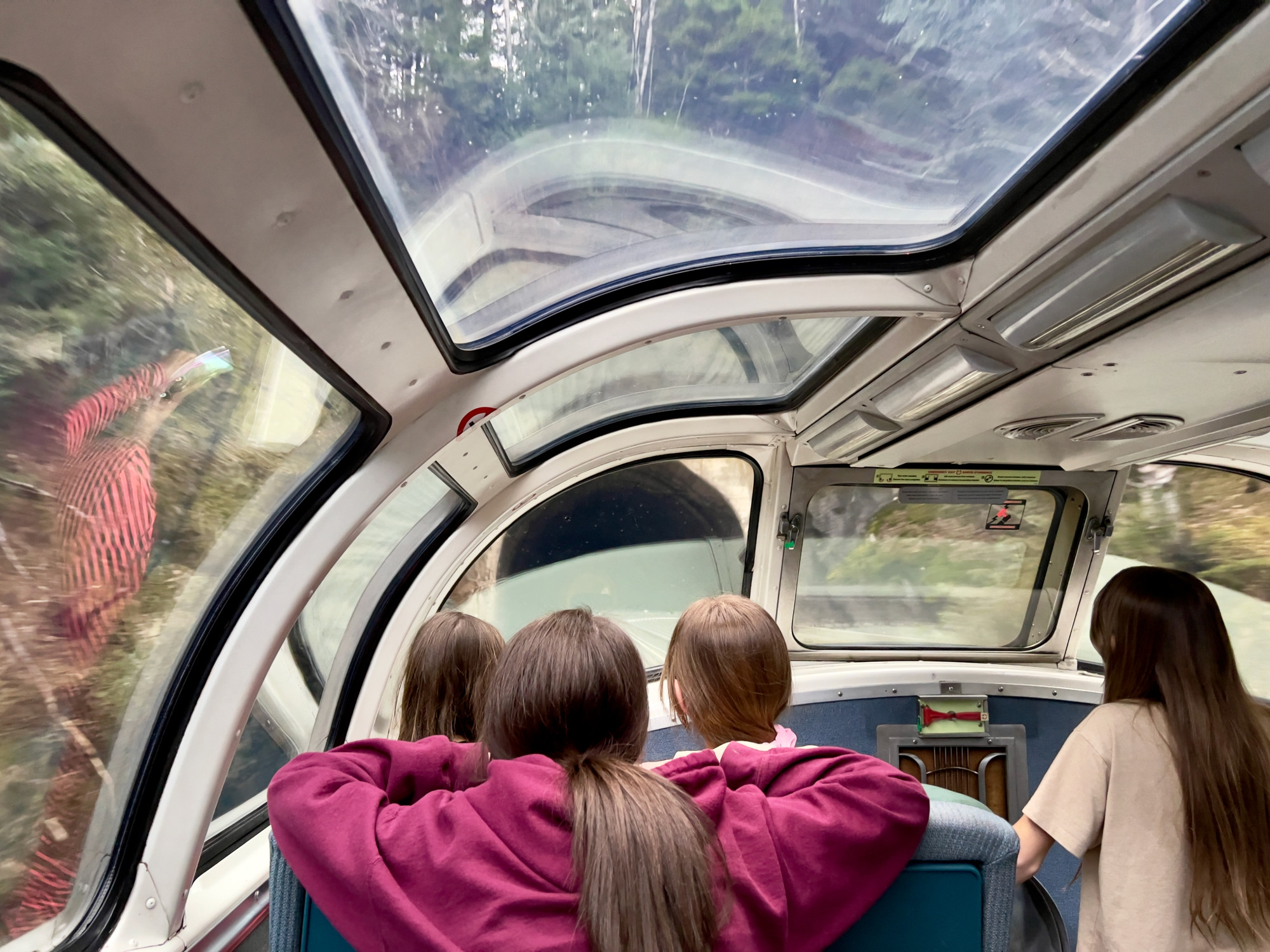
The rolling stock, despite subsequent refurbishment, still retains the flavour of its 1950s origins. The silvery corrugated exterior is reminiscent of Airstream trailers, or French cars of the same era; the “bullet” bar car tapers to a rounded point; and there’s a hefty solidity and a lack of automation to a silver and grey interior.
For an hour or so the train trundles through suburbs that could be reached far more quickly using the local metro system, but no one is in a hurry. A century ago, crossing Canada took one day less, comments one rail fan, but today freight has priority over passengers. So we sometimes sit in sidings while long strings of containers and tankers pass by.
For once, the journey genuinely is the destination, and no one objects to being temporarily marooned amid the grandeur of snow-striped peaks, with the track clinging to cliffs above the broad, strong rush of the Fraser River.
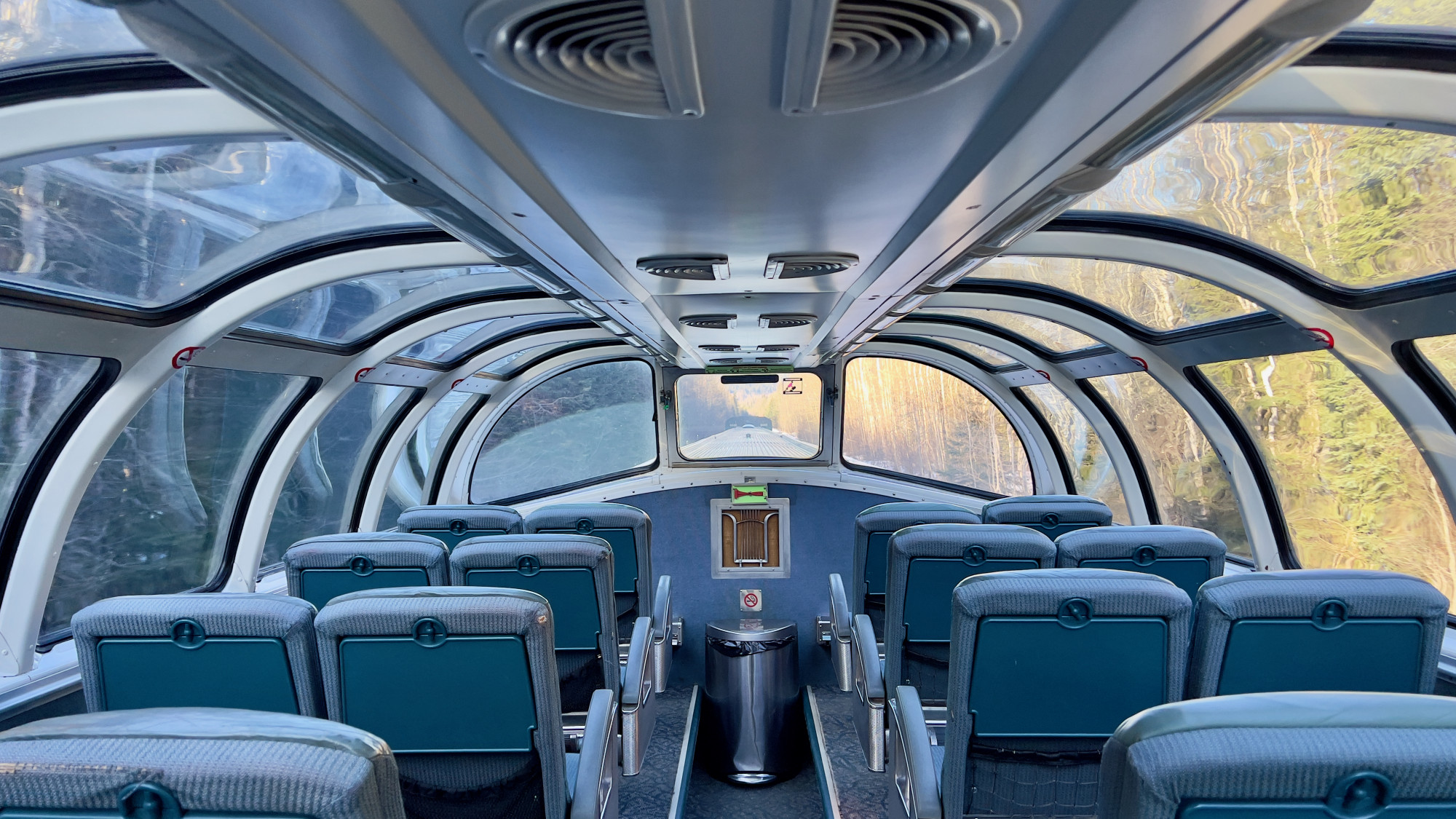
An arrival in Jasper four hours late barely raises an eyebrow.
Jasper is a compact community with origins in 1911 as a railway siding surrounded by pointy peaks on the Alberta side of the Rockies, in what is now Jasper National Park.
It’s full of outdoor equipment shops, cafes and restaurants, and rustic, family-friendly accommodation serving those staying for the spaghetti of ski runs at Marmot Basin, or dogsledding, or summertime hiking, rafting, horse riding and wildlife viewing. Elk, moose, and mule deer are even occasionally encountered in the streets.
But if Jasper is pleasantly rustic, then so is VIA Rail’s Skeena, consisting merely of one locomotive, one luggage van, one seating car and one bar and dome car, of the same vintage as those on the Canadian.
Despite dithering to admire the 14-metre (45ft) high Two Brothers totem pole, a town landmark, I arrive at the station 45 minutes before departure but am still the last to check in, and to acquiesce to gentle insistence that I part with my luggage.
The two-day journey on this more northerly route back to the coast is entirely in daylight, with an overnight in the logging town of Prince George.
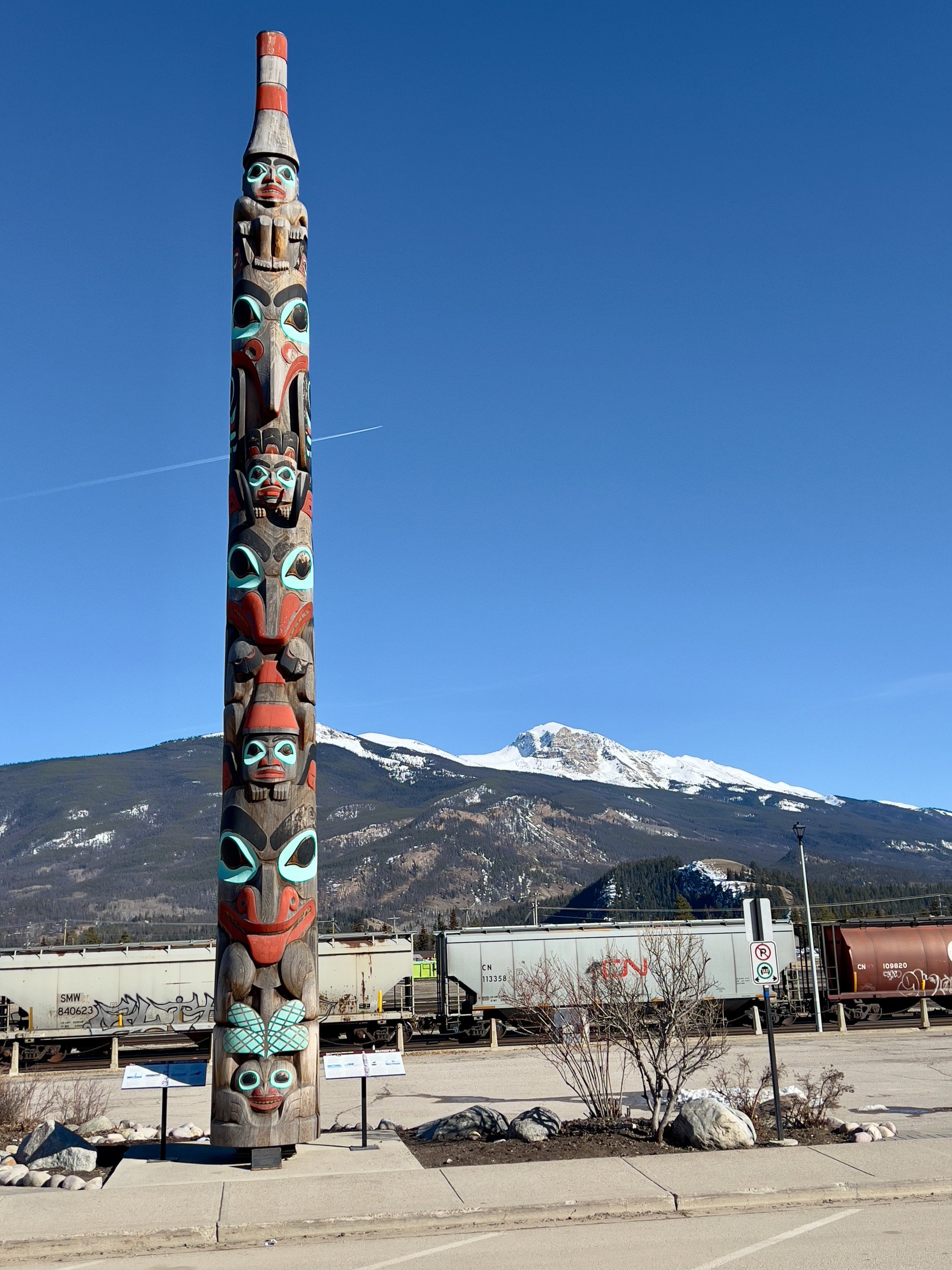
The station, of 1925 vintage, with its high, wood-beamed ceiling and elegant benches upholstered in green, displays ancient photographs of the line’s construction and a large and frighteningly lifelike stuffed bear in a glass case.
In the end, only eight people board the 62-seater train, and whereas there’s a scramble for dome car places on the Canadian, on the Skeena I often have the upper level all to myself.
Perhaps this is because the train is regarded as an essential service, and no one else is on board just for the ride. The train is the only way to reach some of the tiny settlements through which we pass, and these are nearly all request stops, which can be booked online 48 hours in advance.
But from some platforms there’s no visible residence of any kind, and those living somewhere out of sight in Wi-fi-free wilderness may simply stand at the side of the track and flag the train down.
“Sometimes we take them shopping and they come back on the next train,” says the attendant. “They disappear off and we don’t know if it’s to a mansion or a tent.”

On the Canadian, three-course meals were brought to tables covered with snowy linen, but here there are only sandwiches and snacks for sale, and drinkable coffee. Anything more exciting needs to be brought aboard.
The line still measures distance in miles, as when it was built, and after about 17 of them (28km), we reach the route’s highest point: snowy Yellowhead Pass, at over 1,100 metres.
We start a long descent from winter to early spring, initially returning alongside the still-frozen Fraser River, the most important salmon river in the world, before turning northwest to follow other streams.
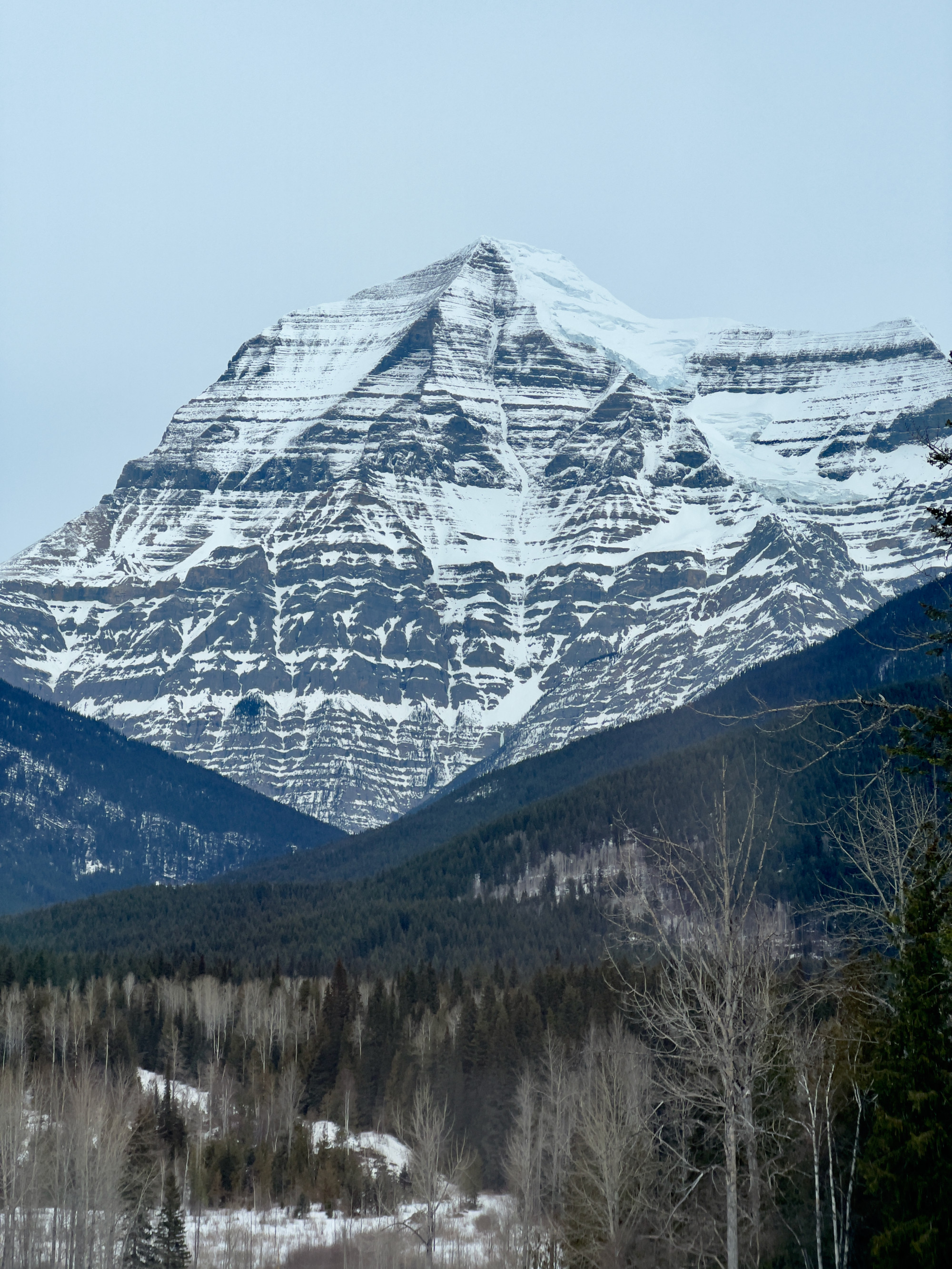
We pass Mount Robson, which, at nearly 4,000 metres, is the highest mountain in the Rockies.
The rivers are highways of whiteness, occasionally broadening into lake-like reaches, their surfaces sufficiently hatched with animal tracks to suggest that the surrounding forests must be teeming with life. But until a new fall acts as an eraser, the snow records everything that passes.
Moose, elk and foxes are glimpsed as black silhouettes against the snow. A surprisingly early bear is reported by the driver to be feasting on a carcass, but, typically timid, it has moved off by the time the dome car passes.
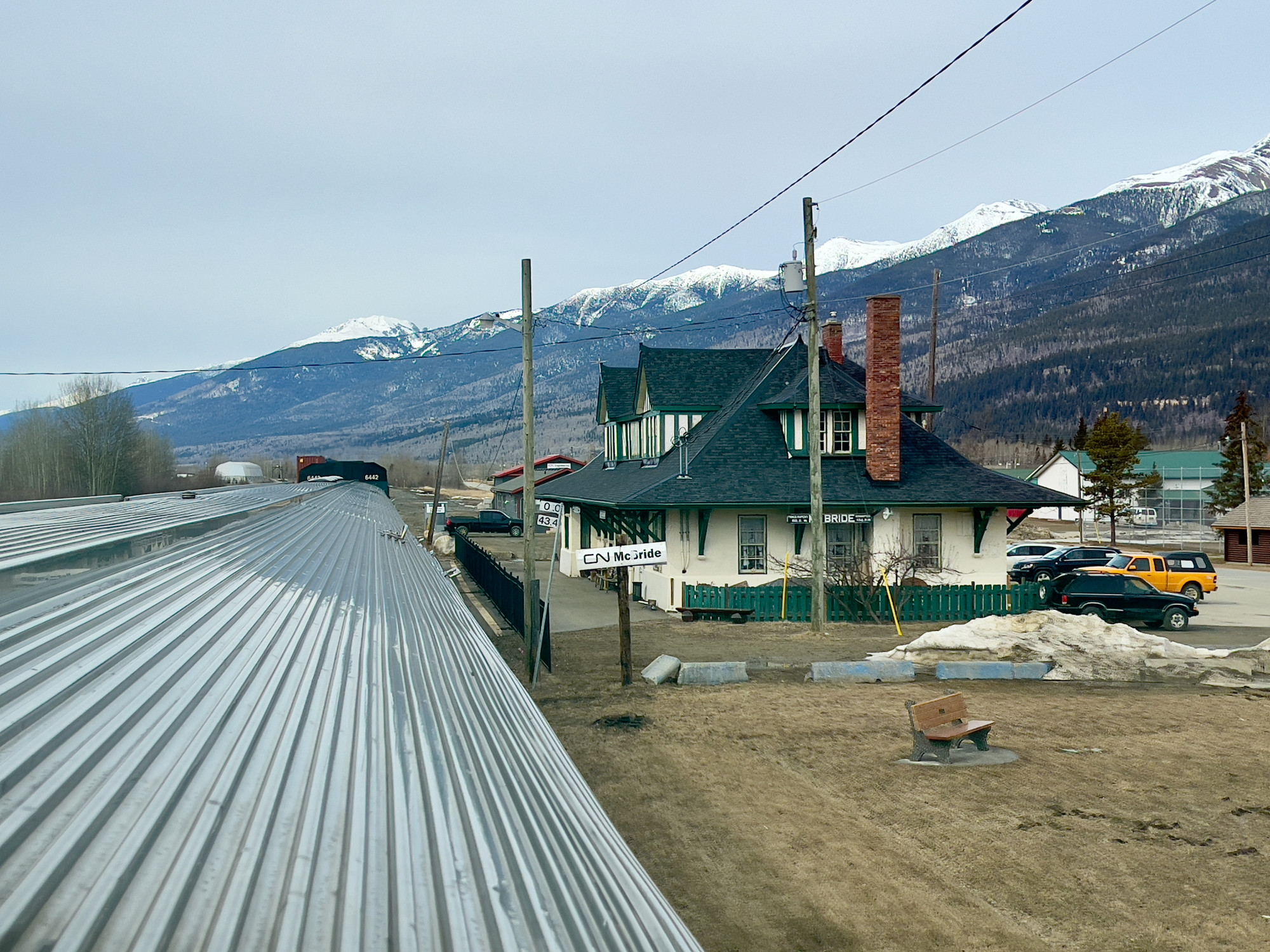
To the astonishment of even the attendant, we end the day’s seven-hour journey to Prince George 30 minutes early.
“Don’t expect this tomorrow,” he warns. Freight trains will almost certainly extend what is anyway scheduled to be a 12-hour journey.
“They’re bigger, longer, and they own the track,” he says.
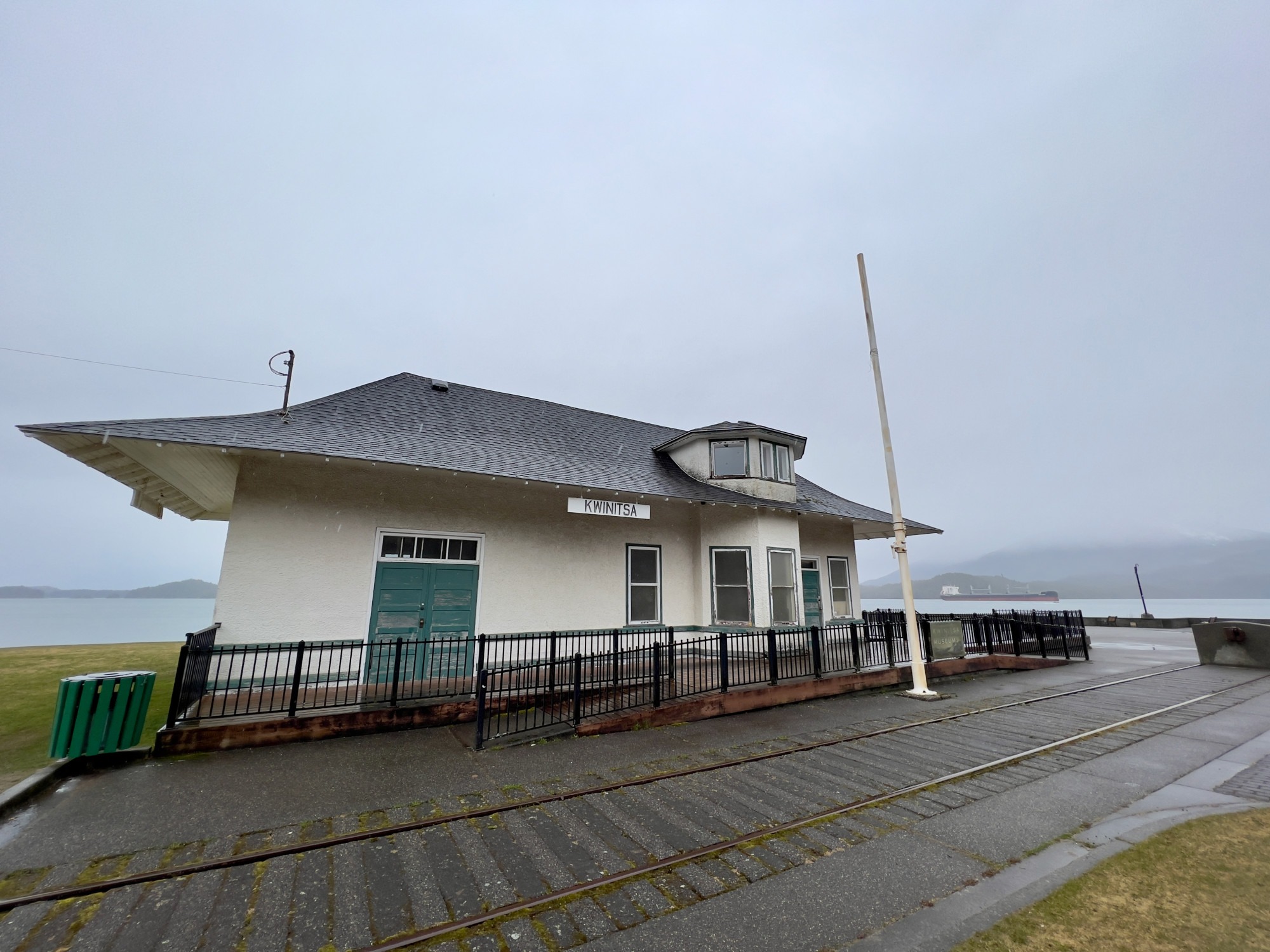
Although a rough-and-ready logging town, Prince George provides a hearty dinner and a comfortable hotel bed. The next day, the train picks up speed on the flatter land heading towards the Coast Mountains, and small patches of open water appear as bruises on the surface of the river.
The scenery that had been intimate, including narrow corridors of lush, dark evergreens crowding the track, steps back. Settlements become larger, with some evidence of industry, and two families from logging, mining and sometimes Bible-thumping communities, heading for holidays on the coast, swell our numbers to 15.
The line will be busier from May, says the attendant, and indeed on both the Canadian and the Skeena there’s expectation of increased demand this year from European rail enthusiasts unable to travel across Russia on the Trans-Siberian.
Late afternoon brings a return of grandeur with the crossing of the Coast Mountains, passing the sawtooth Seven Sisters range, until, after dark, there are floodlit docks and giant cranes with flashing lights.
The attendant comes through to find out how many taxis he should order to take passengers the final few kilometres into Prince Rupert.

The town was also a creation of the railway, a meeting point for coastal shipping services and trains with minerals and timber from the interior, as well as grain from the prairie provinces.
The next day, the excellent Museum of Northern British Columbia recounts the history of the line’s construction and introduces the histories of the different nations of the coast along with fine examples of their variedly intricate arts.
Blasting through the mountains cost nearly triple per mile the cost of prairie construction. Twelve million tons of earth were shifted, and two million charges of explosives were used to blast away four million tons of rock for the 100 miles just travelled down to Prince Rupert. It took two years to build one 2,200ft section.
Carping at last night’s delay of just one hour would seem unreasonable. Even if it mattered.

